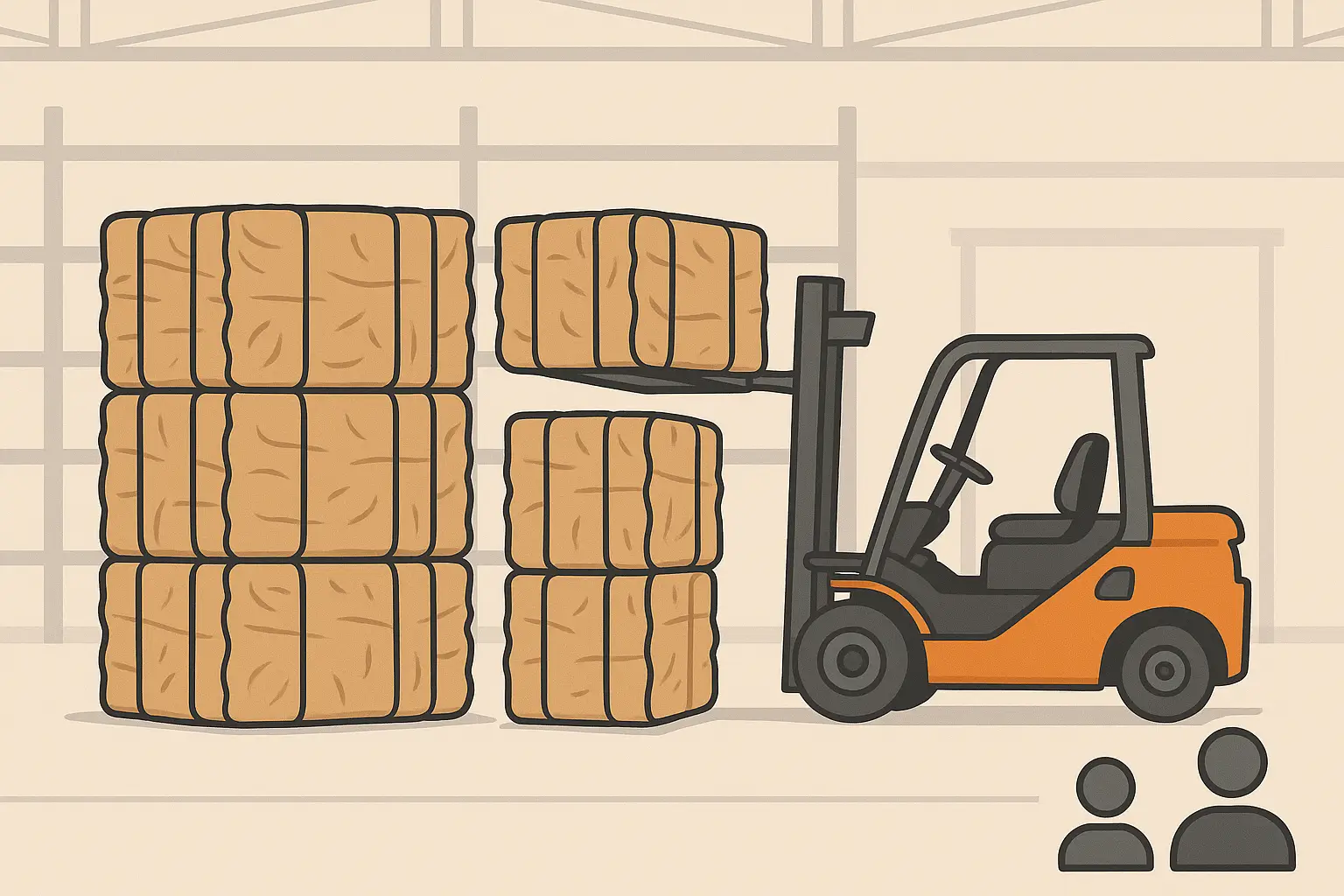Turn Your Waste into Profit Businesses of all sizes generate substantial volumes of corrugated cardboard, an in-demand commodity whose value often goes untapped. By compressing loose cardboard into dense bales, you reduce handling and transport costs while creating a product that recyclers, paper mills, manufacturers, and waste brokers pay for. Understanding who buys cardboard bales, where to sell, how to prepare, and what prices to expect is essential to optimizing your revenue stream.
1. Primary Buyers of Cardboard Bales
Recycled corrugated cardboard (Old Corrugated Containers, OCC) serves as a raw material for new paper and packaging products. Major purchasers include:
- Paper Mills Process large truckloads of baled OCC into pulp and new paper. They typically require mill-size bales (~800–1,200 lb/360–550 kg) and pay $80–150 per ton in the U.S. and £50–150 per ton in the U.K., depending on market conditions and bale quality.
- Recycling Centers & Brokers Regional recycling facilities and brokers purchase small to medium bales (30–60 kg mini bales, 150–250 kg medium bales) at scaled rates. They often offer $50–120 per ton based on volume, contamination, and logistics.
- Manufacturers & Secondary Users Packaging companies, corrugated box producers, and specialty recyclers sometimes buy bales directly to integrate recycled fiber into new products, particularly when local supply chains and sustainability mandates favor recycled inputs.
- Waste Management Firms Integrated waste service providers offer baled cardboard collection as part of commercial recycling contracts, often bundling collection, baling equipment rental, and revenue sharing. Rates vary widely based on contract terms and bale volumes.
2. Where to Sell Cardboard Bales
2.1 Local Recycling Facilities
Use tools like Google Maps, RecycleNation, or IndustryNet to locate nearby recycling centers and brokers that accept baled OCC. Enter your ZIP or postal code and search for “cardboard recycling” or “OCC bale buyers.”
2.2 Online Marketplaces & Directories
- Recycler.com – Directory of recyclers that purchase cardboard bales nationwide.
- RecycleInMe and go4WorldBusiness.com – B2B platforms for bulk buyers and sellers of baled cardboard.
2.3 Specialized Buyers & Brokers
- Repackify – Competitive pricing and scheduled pickup, from single units to full truckloads.
- Compact & Bale – National cardboard collection service in the U.K., offering premium rates for mill-size bales.
- Business Waste UK – Provides baler rental and bale collection with quoted rates of £50–150 per ton.
2.4 Direct-to-Mill Relationships
Large-volume producers (e.g., retailers, warehouses) with capacity for pallet jacks or forklifts to handle mill-size bales can negotiate directly with paper mills to secure higher per-ton rates and avoid intermediary fees.
3. Bale Preparation & Quality Standards
Optimizing bale value begins with proper preparation:
3.1 Bale Size & Weight
- Mini Balers: 30–60 kg bales
- Medium Balers: 150–250 kg bales
- Mill-Size Balers: 360–550 kg bales (80″×30″×48″) or 1,000 lb bales for U.S. mills
Dense, uniform bales yield more dollars per bale and streamline truck loading—standard loads hold ~30 mill-size bales per 53′ trailer.
3.2 Contamination Control
To avoid rejections or downgraded pricing, ensure bales are free of:
- Plastics (film, tape, Styrofoam)
- Food residue, paint, metallic materials
- Polyethylene-lined cardboard (consider removing liners)
3.3 Moisture Management
Wet or damp cardboard diminishes fiber quality and can clog recycling equipment. Always bale dry material and store bales on pallets or under cover to prevent moisture ingress.
3.4 Bale Tying & Palletizing
Use high-tensile wire or strapping to secure bales. Palletize bales when required by buyer to facilitate forklift loading and maintain bale integrity.
4. Pricing Dynamics & Expected Revenues
4.1 U.S. Market Rates
- National Average: ~$95 per ton (range $70–120) as of mid-2025.
- City Variations: $40 (Fontana, CA) to $100 (Anaheim, CA) per ton; national average $66.67 per ton.
- Per-Bale Basis: ~$0.05–0.09 per lb, equating to $300–540 for a 6-bale truckload (50–90 bales).
4.2 U.K. Market Rates
- Standard Range: £50–150 per ton for clean, mill-size bales.
- Irish & U.K. Broker Rates: £85 per ton typical through waste trading networks like Zest Recycle.
4.3 Price Influencers
| Factor | Impact on Price |
|---|---|
| Quality | Clean, uncontaminated bales command premium rates |
| Volume | Larger, consistent loads tend to negotiate bulk discounts or higher rates |
| Location & Logistics | Proximity to mills/recyclers lowers transport costs and increases net price |
| Market Demand | Seasonal peaks (e.g., holidays) drive up rates; global OCC demand matters |
| Supply Availability | Local supply gluts can depress prices; scarcity boosts rates |
Source: Market summaries and recycler reports
5. Selling Process & Logistics
- Identify Buyers: Compile a list of local mills, recycling centers, and brokers.
- Request Quotes: Provide bale specifications (size, weight, quality) to obtain competitive bids.
- Schedule Pickup or Delivery: Determine if buyer offers on-site pickup or requires delivery to their facility.
- Weigh & Document: Record bale weights and obtain duty-of-care or waste transfer notes, as required by local regulations.
- Payment Terms: Negotiate payment timing—common terms include 7, 15, or 30 days post-delivery.
Building long-term relationships with a buyer often yields better pricing, prioritized pickups, and flexible terms.
6. Maximizing Profitability
- Invest in Right-Sized Equipment: Match baler capacity to your waste volume—mini or medium balers for lower volumes, mill-size for large generators.
- Maintain Bale Quality: Implement contamination checks before baling to avoid downgraded loads.
- Consolidate Shipments: Accumulate full truckloads to access premium mill rates and avoid partial-load surcharges.
- Monitor Market Trends: Track OCC commodity prices monthly to time your sales when demand and prices peak.
- Leverage Consultants: Waste management consultants (e.g., Envirogreen, Compact & Bale) can audit your process and recommend efficiency gains and rebate maximization strategies.
By understanding who buys cardboard bales, where to sell, how to prepare quality bales, and what prices to expect, businesses can transform cardboard waste from a disposal expense into a profitable revenue stream. Implementing best practices in baling, scheduling competitive bids, and cultivating buyer relationships will ensure maximum returns on every ton of recycled fiber.



Leave a Reply